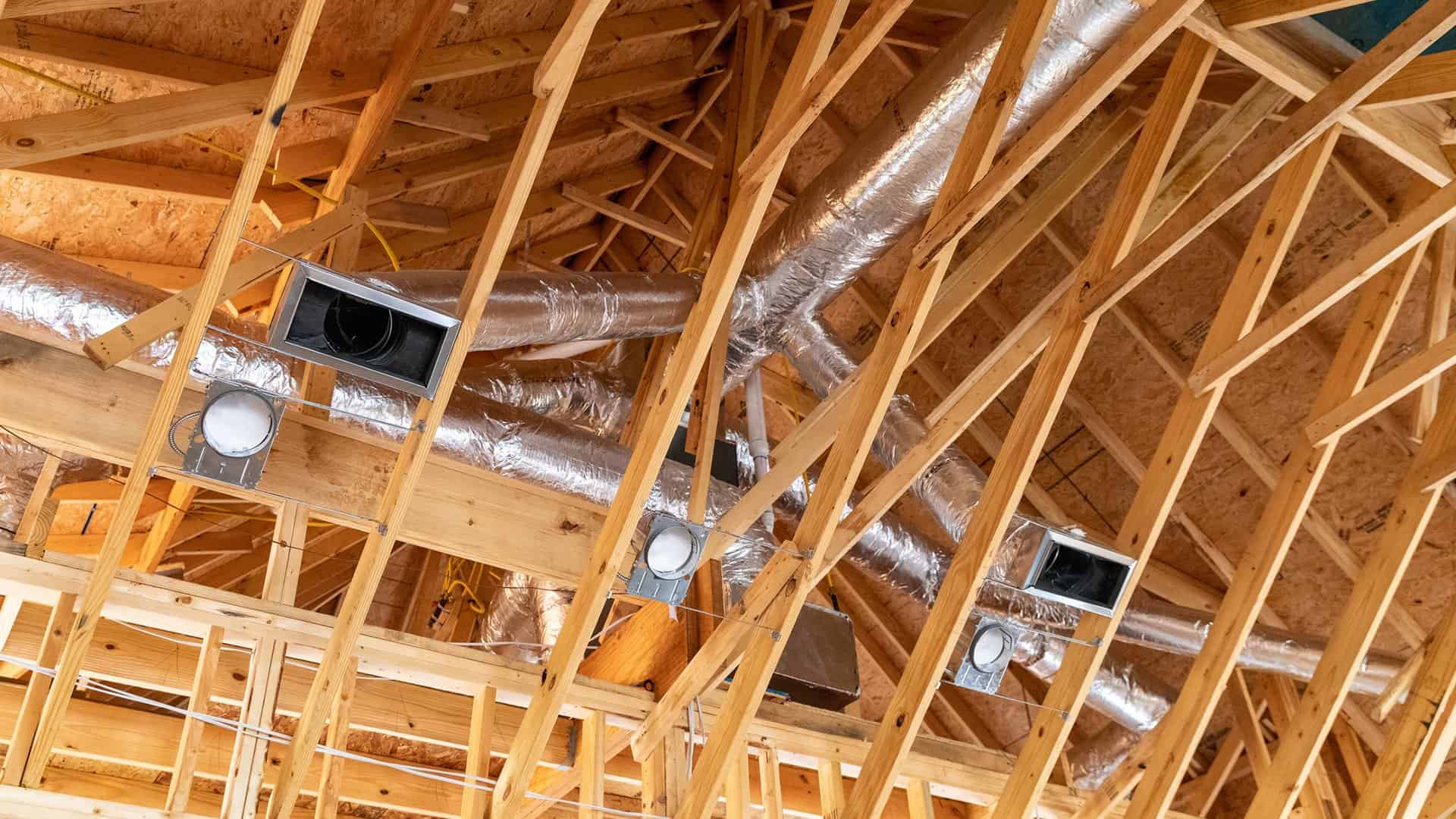When renovating your home there are so many things to keep track of it can be easy to overlook a renovation’s potential effects on your HVAC system. However, there are things you can do before, during and after renovation. These tips can help your HVAC system to function as efficiently and effectively as possible.

Pre-Renovation HVAC Considerations
Before the renovation begins, think about how it may change your HVAC needs, for instance, if you’re adding significant square footage to your home. Your current system may need to be replaced with a larger one. An undersized HVAC will run inefficiently and won’t be able to keep up with the heating and cooling of your home. Also, if your renovation will require adding or moving ducts, you will need to bring in a licensed HVAC contractor to make sure they’re configured correctly. Don’t count on your general contractor for this.
During the renovation, you will need to protect your HVAC system from dust and debris. Turn off the system while work is going on, especially demolition work so that dust and dirt don’t get circulated throughout the system.
Let’s face it, heating and cooling is not cheap. Unfortunately, it may be more expensive if your system is the wrong size. A system that is too small for your home may struggle to maintain a comfortable temperature, reducing your family’s comfort level and causing the HVAC to run longer and harder. In contrast, a system that is too large will often cycle on and off more frequently, this triggers spikes and energy usage and also creates unnecessary wear and tear on the system. It also may affect your humidity.
If your HVAC system was properly sized originally, you may need to re-evaluate it during the course of your remodel. This is especially true if you plan on adding on any rooms or reconfiguring the size or shape of existing rooms. Or making any other modifications that affect the total square footage of your living space. While it’s always best to hire a professional to have detailed calculations done. You can always use a few simple calculations found online to get a rough estimate of the capacity required to heat and cool your home.

Don’t Forget About the AC Ductwork
Even the most efficient and advanced systems won’t do much good without proper ducting. The ductwork in your home needs to be clean and free of obstructions and laid out in a way that maximizes the efficiency of your HVAC system, if you change the layout of your home during a renovation, you may need to adjust the configuration of your ductwork to ensure that you maintain proper air flow.
If you’re building in addition, you’ll also need to decide whether you want to extend the existing ductwork or add a second HVAC system to handle the new space, while simply adding to your existing ductwork may seem like the obvious answer, extending your ductwork may lead to significantly reduced efficiency and may ultimately be a less cost-effective choice.
A remodeling project is also a good time to evaluate the condition of your current ductwork. According to the EPA’s energy star program, the average home loses 20% to 30% of the conditioned air that passes through its duct system due to leaks and improper connections and other deficiencies, this represents a significant and unnecessary cost that can be addressed by identifying and sealing these leaks through the course of your project.
Make Sure Your AC System is Ready to Go After Remodeling
After the renovation is complete, you want to make sure that your HVAC cleanup is done correctly and change out the air filter immediately. It’s a good idea to have a licensed HVAC contractor inspect your HVAC unit and your ductwork. HVAC equipment and ductwork can be full of debris after a home renovation, we’ve seen it happen. Construction debris will not only make the HVAC less efficient, but it could also substantially shorten the system’s lifespan. Having it inspected and cleaned can save you money in the long run.
Particles like drywall dust and sawdust are quite small and despite your best efforts may still make their way into the system or the evaporator, this will cause clogged air filters, poor performance, high energy bills, frequent temperature fluctuations, and excessive dust throughout your home. In fact, sheet rock dust will absolutely ruin the evaporator coil. The dust that settles inside the coil coupled with the condensation that runs off of the evaporator will make a concrete type of sludge in your system. This will not be able to be cleaned or flushed, and the evaporator will have to be replaced.
Of course, the most important aspect of your home’s heating and cooling is the HVAC system itself and it may be time to consider upgrading if you’re going through the trouble of remodeling your home. If your current HVAC is an older model, it’s likely built to be considerably less efficient than newer energy saving models. For example, replacing your older HVAC system with one that carries an energy star rating can save you as much as 20% on monthly heating and cooling costs, putting that money back into your pocket to help pay for the cost of a new unit. Even better, you may be eligible for certain federal tax credits.
A home remodel is an exciting and challenging project that can ultimately benefit you and increase your home’s value. Whether you’re upgrading a kitchen or expanding on a bathroom or adding a new bedroom for your growing family, don’t forget to consider the HVAC system’s needs during this process.
From the Expert
This blog is written by Ed Doughty, owner of Glacier Heating and Air Conditioning. If you’re planning a renovation or need annual AC maintenance service, you can speak directly with Ed at (904) 540-8199 or visit www.glacier-hvac.com.









